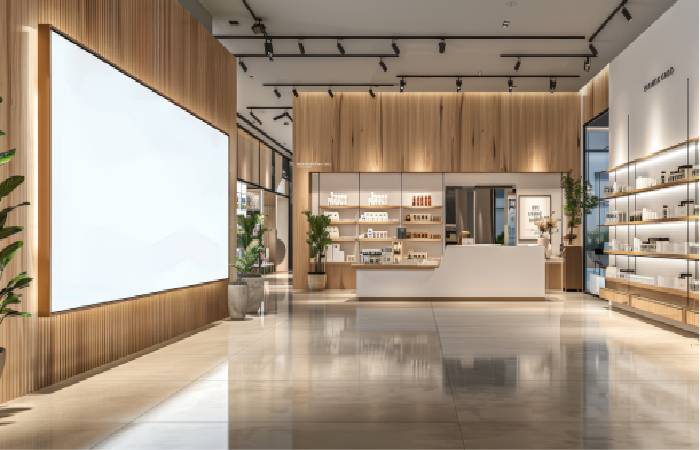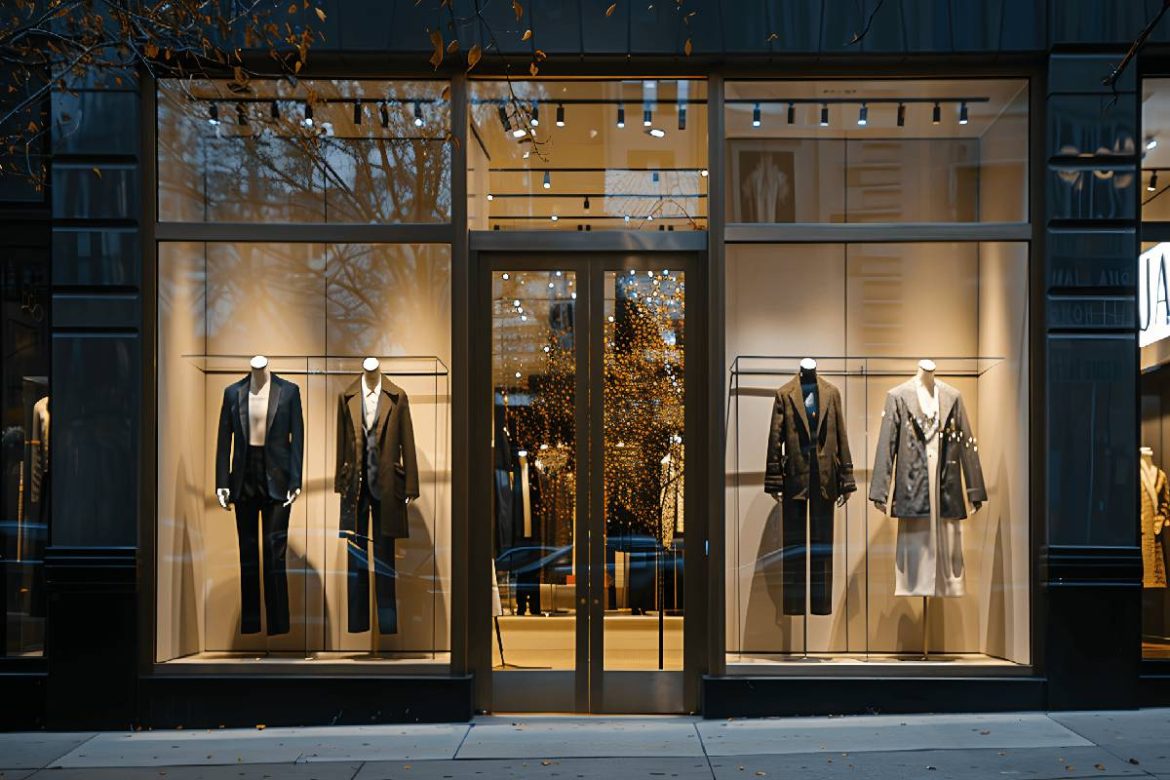The strategic use of lighting in retail environments is a powerful marketing tool that can dramatically impact customer behavior and sales performance. It can increase dwell time, highlight merchandise effectively, create emotional connections with brands, and ultimately drive conversion rates. As consumers become increasingly selective about where they shop, the ambiance and visual appeal created by thoughtful lighting design has never been more critical for brick-and-mortar retailers looking to compete with online alternatives.
This guide explores how retailers can leverage commercial lighting solutions to create compelling spaces that not only showcase products in their best light but also enhance the overall customer journey—from storefront attraction to checkout satisfaction.
Table of Contents
Storefront and Entrance Lighting: Making the First Impression
A retail store’s exterior lighting serves as its nighttime billboard, determining whether potential customers walk past or step inside.
Effective storefront lighting strategy begins with understanding how to create contrast against surrounding businesses. In busy commercial districts, distinctive facade lighting can help establishments stand out among competitors. LED projection systems now allow retailers to incorporate dynamic lighting that changes colors, patterns, or even projects brand imagery directly onto storefront surfaces.
The transition zone—the area just inside the entrance—requires special lighting consideration to address the “adjustment period” as customers’ eyes adapt from exterior to interior lighting conditions. Employing a gradual lighting transition prevents the disorienting effect that can occur when moving between dramatically different light levels.
Window displays benefit from carefully calibrated lighting that works effectively during both day and night. During daylight hours, displays must compete with natural light, requiring higher illumination levels and strategic positioning to prevent glare and washout effects. After dark, these same displays become luminous attractors, with focused accent lighting that highlights key products while minimizing spill light that could distract from the merchandise.
Modern LED options with precise beam control allow retailers to achieve these effects while maintaining energy efficiency. Trusted providers of modern commercial lighting solutions can execute these types of lighting seamlessly, making sure they’re able to serve their purpose.
Interior Layout and Zone Lighting
Successful retail lighting design recognizes that different store zones serve distinct purposes and, therefore, require tailored lighting approaches.
The general ambient lighting provides overall illumination and sets the store’s baseline atmosphere. This layer should maintain sufficient brightness for safety and comfort while allowing other lighting elements to create contrast and interest. Recent trends favor lower ambient light levels supplemented by strategic accent lighting, creating a more dramatic and engaging environment.
Task-oriented areas demand functional lighting that serves specific purposes. Checkout counters need clear, bright illumination to facilitate transactions and reduce errors. Fitting rooms require lighting that flatters customers while accurately representing how garments will appear in various environments. Many upscale retailers now include adjustable lighting systems that allow customers to preview outfits under different lighting scenarios, reducing return rates.
On to accent lighting. This creates visual interest and hierarchy within the space. Typically three to five times brighter than ambient lighting, these focused lights draw attention to featured merchandise, new arrivals, or high-margin products. Modern LED track systems offer unprecedented flexibility, allowing retailers to reconfigure accent lighting as merchandise displays change.
Color Rendering and Product Enhancement

The ability of light sources to accurately reveal the true colors of merchandise—measured by the color rendering index (CRI)—is fundamental to retail success.
Products displayed under high CRI lighting (90+ on the 100-point scale) appear more vibrant and authentic, inspiring greater consumer confidence. This factor becomes particularly crucial in categories where color accuracy directly influences purchasing decisions, such as fashion, cosmetics, home décor, and fresh produce.
Different merchandise categories benefit from specialized lighting approaches. Jewelry and precious metals shine most brilliantly under focused halogen or high-CRI LED spotlights that create sparkle and highlight facets. Clothing requires balanced lighting that reveals texture while representing colors accurately—many fashion retailers now use lighting with CRI values of 95 or higher.
Food merchandising presents unique challenges, with different types of produce requiring specific light spectrums to appear most appetizing—reds and yellows for bakery items, specialized spectrums for meat that enhance freshness without accelerating spoilage.
Technology Integration and Smart Lighting Systems
The evolution of retail lighting has accelerated dramatically with the integration of smart technologies and IoT capabilities.
Modern commercial lighting systems now offer unprecedented control and data collection opportunities. Programmable lighting allows retailers to create dynamic environments that change throughout the day—brighter, cooler light during morning hours to energize shoppers, transitioning to warmer tones in evening hours that encourage relaxation and indulgence.
There are also sensor-integrated systems that automatically respond to changing conditions, adjusting illumination based on natural light levels, store occupancy, or even customer interaction with specific displays. These technologies not only enhance the shopping experience but also optimize energy usage.
Analytics-enabled lighting infrastructure provides valuable business intelligence. Heat-mapping capabilities track customer movements throughout the store, identifying high-traffic areas and dead zones. Dwell-time analysis reveals which displays successfully capture customer attention. When integrated with sales data, these insights allow retailers to quantify the impact of lighting changes on purchasing behavior and continually refine their visual merchandising strategies.
Conclusion
The strategic implementation of commercial lighting solutions represents one of the most powerful yet frequently overlooked opportunities for retail enhancement. As consumer expectations continue to evolve, the thoughtful application of lighting principles—from psychology-informed design to technology integration—can provide retailers with significant competitive advantages. The most successful retail environments treat lighting not as an afterthought but as a fundamental element of the overall customer experience strategy.

